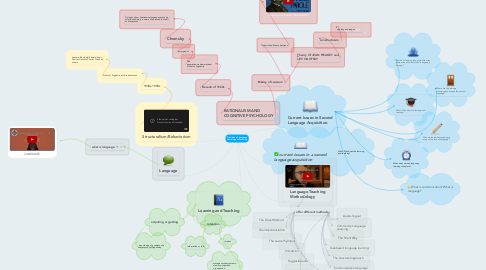Principles of Language Learning and Teaching
by KELLY RAMIREZ

1. Language
2. what is language
3. Learning and Teaching
4. acquiring or getting
5. - knowledge of a subject of a subject or a skill by study
6. retencion
7. information or skill
8. implies
9. storage system, systems, memory, cognitive organization.
10. Structuralism/Behaviorism
11. 1940s-1950s
12. School of linguistics with its advocates
13. Leonard Blomfield, Edward Sapir, Charles Hockett, Charles Fries and others.
14. LANGUAGE
15. RATIONALISM AND COGNITIVE PSYCHOLOGY
16. Decade of 1960s
17. The generative-transformational school of linguistics
18. emerged of
19. Chomsky
20. Trying to show that human language cannot be scrutinized simply in terms of observable stimuli and responses
21. Current Issues in Second Language Acquisition.
22. Who? Who does the learning and teaching?
23. What is communication? What is language?
24. How does learning take place? How can person can ensure success in language learning?
25. When does second language learning take place?
26. Where Are the learners attempting to acquire the second language?
27. Why are learners attempting to acquire the second language?
28. theory of saussure
29. show the diffrence between
30. langue and parole (SAUSSURE)
31. Theory Of JEAN PIEAGET and LEV VIGOTSKY
32. constructivism
33. vigotsky and piaget
33.1. Constructivism argues that the child builds his peculiar way of thinking, knowing, in an active way, as a result of the interaction between his innate abilities and environmental scanning performed by treating the information received from the environment, hence the importance of having good models that interact.
34. Language Teaching Methodology
35. offer different methods
36. The Direct Method
37. Grammar-translation
38. Audio-lingual
39. The structural approach
40. Suggestopedia
41. Total Physical Response (TPR)
42. Communicative language teaching (CLT)
43. The Silent Way
44. Community Language Learning
45. Immersion
46. Task-based language learning
47. The Natural Approach
48. The Lexical Syllabus
49. current issues in a second language acquisition
49.1. Who? Who does the learning and teaching?


